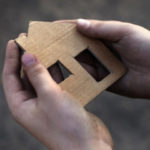When David Stark was studying painting at the Rhode Island School of Design, he didn’t know that the occupation “event designer” existed. But art school led him to New York City and floral design, and the realization that he needed a broader form of artistic expression. He found it, Stark writes in his new book, The Art of the Party, through designing events — including programs for such high-profile clients as Beyoncé and the Museum of Modern Art — that he describes in terms of art: site-specific installations melding sculpture, performance, and theater. The president and principal designer of David Stark Design and Production, Stark also found satisfaction in the dynamic of working with clients. Unlike painting alone in the studio, he writes, event design requires interpersonal connection: “This work requires an outside voice, will always be about a collaborative process, and ideally makes a whole group of people happy at once.”
 Although many of the 25 events profiled in The Art of the Party could be described as lavish, budget should not be what defines a project, Stark said. He’s a proponent of the imaginative use of everyday materials — tape, ribbon, cardboard — things that “are not perceived of as fancy or things that are not expensive, but [are] used in wild, fabulous, and interesting ways.” Money “can’t buy love,” he writes, “and it can’t buy fun. Parties are about experience.”
Although many of the 25 events profiled in The Art of the Party could be described as lavish, budget should not be what defines a project, Stark said. He’s a proponent of the imaginative use of everyday materials — tape, ribbon, cardboard — things that “are not perceived of as fancy or things that are not expensive, but [are] used in wild, fabulous, and interesting ways.” Money “can’t buy love,” he writes, “and it can’t buy fun. Parties are about experience.”
Experience is also at the core of events whose goals go beyond celebration. “When we do fundraising events for not-for-profit clients or we do corporate events, of course everybody hopes that the guests have fun,” Stark said in an interview with Convene. “But the ultimate goal is not fun — the ultimate goal is to launch a product or to raise money.
“So we think about, how do we infuse the events with elements that reinforce or establish what the event is about? It’s not about decorating. It’s about conceptually driving the ideas home so that the people understand why they’re there, and they’re emotionally struck by the issues that brought them there in the first place. They then become either supporters or followers or clients. There’s real strategy involved. It’s really about lassoing the power of art and the power of design to make a difference.”
Below, Stark offers Convene commentary on four projects featured in his book.

1. Breaking The Mold
Roiling financial markets are serious business — and were particularly so in 2010, the year the Global Volatility Summit debuted in New York City. But the last thing that organizers wanted when they hired Stark was to create a “staid, standard, boring business conference,” the designer said.
 A one-day think tank, the annual summit brings together about 400 hedge-fund managers and heavy-hitting keynote speakers like retired U.S. Army Gen. Stanley McChrystal, the former U.S. commander in Afghanistan, with institutional and private investors to talk about volatility and trading strategies. The program includes conference basics such as speakers, panels, and networking, Stark said, but Global Volatility’s organizers want the design to project a different sensibility. That first year, he said, “The directive for us was to redefine what ‘conference’ could mean.”
A one-day think tank, the annual summit brings together about 400 hedge-fund managers and heavy-hitting keynote speakers like retired U.S. Army Gen. Stanley McChrystal, the former U.S. commander in Afghanistan, with institutional and private investors to talk about volatility and trading strategies. The program includes conference basics such as speakers, panels, and networking, Stark said, but Global Volatility’s organizers want the design to project a different sensibility. That first year, he said, “The directive for us was to redefine what ‘conference’ could mean.”
Instead of a meeting visually dominated by rows of chairs lined up in a hotel ballroom, Stark and his team created what he called a “sort of radical art installation,” based on sculptures in the shape of the letters V-O-L-A-T-I-L-I-T-Y. The sculptures not only literally spelled out for attendees what the meeting was about, they “really helped define that this was a different experience,” Stark said. “It felt more like going to a contemporary art show,… something that was a much more forward-thinking, happening experience than the standard business conference.”
Each letter-sculpture was depicted as being under threat and made people think, Stark said. The letter A was suspended over three circling shark fins, while one of the T’s was arranged underneath an umbrella, the metal tip of which was being zapped by a bolt of lightning. Y could be seen to represent the financial-services industry — it looked as if it were in the process of being tarred and feathered.
 “The sculptures encapsulated what the event was all about — that’s the key,” Stark said.“Clearly, you can go in and you can decorate a room. You can bring pretty tablecloths, and you can do beautiful flowers. I love all of that stuff, too, and we do that for lots of different types of events. But in this case it wasn’t particularly appropriate.”
“The sculptures encapsulated what the event was all about — that’s the key,” Stark said.“Clearly, you can go in and you can decorate a room. You can bring pretty tablecloths, and you can do beautiful flowers. I love all of that stuff, too, and we do that for lots of different types of events. But in this case it wasn’t particularly appropriate.”
The goal of establishing the event as a provocative kind of experience guided all of the design choices, beginning with the selection of the venue, on a vacant floor of 7 World Trade Center, across from Ground Zero. After a breakfast, the attendees were signaled that the first session would begin not by chimes but by a uniformed marching band. The agenda was printed on a newspaper facsimile — The Volatile Times — handed out by “newsies” dressed in vintage garb.
People come to the Global Volatility Summit year after year, partly because the leaders of industry are there, Stark said, “but partly because everybody knows that it’s a really radical, fun experience. They come to look forward to this thing in the industry that breaks the mold.”
2. If Walls Could Talk

When Stark’s firm began planning for a fundraising event celebrating the 15th anniversary of the Museum of Contemporary Art, North Miami (MOCA), they looked to the museum’s archives for inspiration. As they were going through stacks of exhibit catalogues and press clippings, it struck the design team that they could literally lift the event’s design from the pages of the museum’s history. They used six-inch squares, cut either from excess exhibit catalogues and other materials or from photocopies, to create collages that wallpapered the walls of the museum (the artwork was removed for the gala).
“The result would have been impressive if it was just a collage of fabulous imagery,” Stark said, “but it’s all the more meaningful when you realize that it’s made up of 15 years of the institution’s history. It’s just a slight conceptual twist.” If you can decorate a room and have the meaning of the evening implicit in the décor, “then you’ve gotten to a place that’s above and beyond decorating,” he added. “So we think about, how do we infuse the events with elements that reinforce or establish what the event is about?”
Using materials from MOCA’s archives also was a cost-efficient way to create something special. Unlike some of Stark’s corporate and private clients, MOCA and other nonprofit organizations work on very tight bud gets. “My goal as an event producer also is to make sure that the numbers work,” he said, “so we don’t carry through with ideas that don’t actually work financially.”
3. Sublime on a Dime

Not every David Stark-designed event has a deeply grounded conceptual theme, but each one has to make sense. Stark designs fall and spring fundraisers each year for New Yorkers for Children, a nonprofit organization that supports child welfare in New York City, including providing funds for services for children in foster care. That means keeping costs down. At a charity function, Stark writes, “The last thing someone should think when entering the room is, ‘So … my donation is going to pay for pricey doodads.’”
In 2011, the décor that carried out the event’s theme — based on “the sublimities of India” — used a variety of cost-saving techniques. Stark’s team ran vellum paper through a photocopier to print a classic paisley design, then used the paper to surround inexpensive votive and pillar candles, making glowing centerpieces. Colored vellum was rolled into cylinders and attached to table lights with double-sided tape to create handmade chandeliers. Stark used the chairs available at the event’s venue, the Mandarin Oriental hotel in New York City.
“If the chairs available at the venue have four legs, those legs reach the floor and you can make them work with your design, consider that good enough,” he writes. “… The critical factor with money — like time — is how you spend it. No matter how tight your finances, you can always afford to make a fun event.”
4. A Party in Cyberspace

All of the events that Stark designs are “generally for people who have been everywhere and have done everything,” he said. “I often say that they’re out nine nights a week, and it takes a lot to impress them.”
That describes much of the crowd who attended Huffington Post’s 2010 Game Changers event, a now-annual program where the media company honors 100 people in a dozen fields whom it considers to be “innovators, mavericks, visionaries, and leaders.” Among the 2010 honorees were Twitter founder Biz Stone, actor Sean Penn, Apple founder Steve Jobs, and actresses Mary-Kate and Ashley Olsen.
Stark’s starting point for such events is surprise. “I want to create something that is entirely unexpected and that will really blow their minds, simply because they are running around all the time seeing so many things,” Stark said. “So, how do I create an environment that will be entirely about the client and the occasion, but will be a great surprise for the guests?”
Game Changers was held in a large art gallery in New York City, where Stark draped the walls in black, “creating a sort of black box for all the décor to glow within,” Stark said. The design featured a series of open, steel-wire sculptures — one for each Game Changer category — that were illuminated in fluorescent hues, and lounge spaces where guests could interact with honorees. A series of angled black walls divided the space and served as screens where text describing the accomplishments of the honorees was projected throughout the evening.
“Because the walls were pitched at different angles, you got the sense that you were in an optical space,” which was appropriate for a media company founded in cyberspace, Stark said. “You had these neon sculptures that glowed against the black, and you had all of the projected information. But then there was also a stage, a DJ, and there was yummy food. So you really fell down the rabbit hole into this world that was entirely about the Huffington Post.”
The projections on the walls changed as the evening progressed, to reveal more and more over time. “What I don’t like about an event space … is when you walk in and you see everything at once,” Stark said. “What I like to do is to create a series of spaces so that we’re constantly revealing new things. It really helps to create the excitement in the party, because you want to go and check things out. You want to go explore…. It really inspires you to go see more and more.”
Test Time
Once you finish reading this CMP Series article, read the following material:
- “Breaking Convention,” a feature article about reimagining meeting space at convention centers from the October 2012 issue of Convene.
- “OMG! It Looks Just Like the Rendering: Global Volatility Summit,” a post from David Stark’s online sketchbook, at
- “OMG. It (Usually!) Looks Just Like the Rendering: New Yorkers for Children,” a Huffington Post article about the New Yorkers for Children gala, emphasizing the use of everyday materials.
To earn one hour of CEU credit, visit pcma.org/convene-cmp-
The Certified Meeting Professional (CMP) is a registered trademark of the Convention Industry Council.




